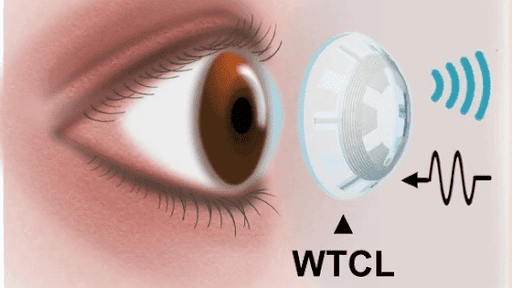Nowadays, many people wear contact lenses, especially because they provide a certain level of freedom that classic eyeglasses cannot provide. Contact lenses move with the eyes, and the user does not feel a barrier in the field of view, as is the case with glasses; Lenses do not fog up, do not stain and are useful even for people involved in physical activities, as they are well fixed in place. In particular, with the right contact lenses, a person should see almost perfectly and not even realize that he is wearing them.
Until recently, the main function of lenses was to somehow replace glasses, thus playing a rather aesthetic role. But science does not stop there and decided to work on giving lenses more “intelligence”, giving them other roles and opportunities.
There are more and more types of “smart” contact lenses on the market today. From lenses that correct color blindness or act like sunglasses, or that can display different information to the people who wear them, to those that can help people with glaucoma.
Why is glaucoma so dangerous? Pressure in the eye can change throughout the day depending on stress, body fluid volume, time of day, and exercise. This makes it difficult to detect and deal with increased intraocular pressure: people usually come to an ophthalmologist with existing problems, and not for a preventive appointment. Yes, and prophylactic reception may well not detect glaucoma.
At the same time, the pressure gradually damages the optic nerve, which transmits visual information to the brain. This eventually leads to irreversible loss of vision and blindness in millions of people around the world!
Glaucoma is usually treated with eye drops, laser therapy, or surgery. All these approaches can reduce eye pressure and normalize the circulation of fluid in the eyes.
For many years, researchers have been trying to find solutions to treat glaucoma with contact lenses. There is already the experience of scientists who have created lenses for the treatment of glaucoma. These lenses respond to increased eye pressure and release the drug on demand.
But here's the catch: they can do either one or the other – either take indicators or release medicine. And with their help, it is quite difficult to measure intraocular pressure and accurately dose the medicine.
Being deeply interested in this subject, recently I came across another news related to this topic. An interesting development was presented by Chinese engineers. For the first time, they were able to make a contact lens not only track or deliver medication to the eye on a schedule, but perform both functions automatically. The lens itself monitors changes in intra ocular pressure and releases a drug that, by applying a weak current, enters the eyeball and reduces pressure.

How does it work? The lens is made of two layers, between which there is a thin air film. As the pressure inside the eye increases, the eyeball slightly changes shape, the volume of the empty chamber changes. Electronics capture this process and give a command to release the drug.
The new contact lens has the necessary “skills” and has already been tested on the eyes of pigs and rabbits. Further human studies are now needed. Find out more about the new ‘smart’ lens on https://www.nature.com/articles/s41467-022-29860-x
While scientists continue to experiment with all kinds of devices to treat eye diseases, it is worth remembering that early detection of glaucoma and timely treatment of the disease remain vital for all those who do not want to go blind prematurely.
When was the last time you checked your eyes?
